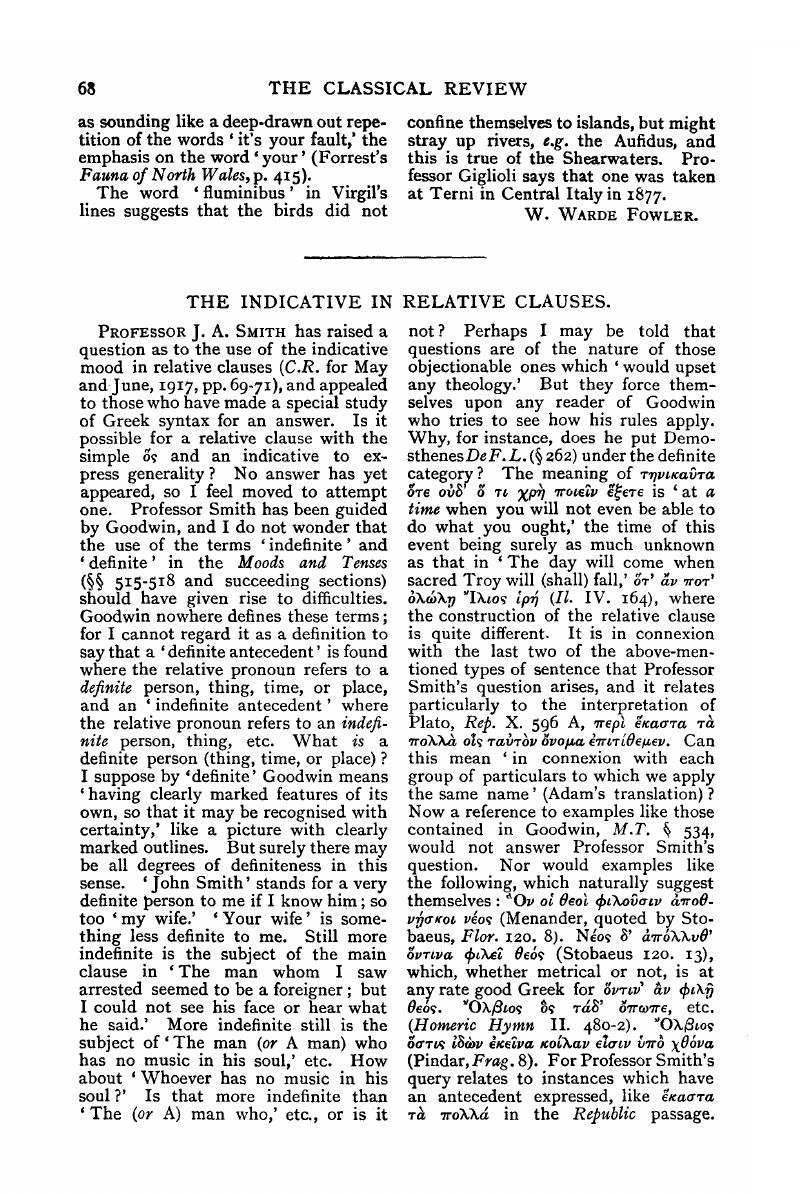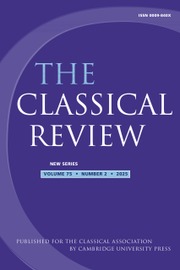Article contents
The Indicative in Relative Clauses
Published online by Cambridge University Press: 27 October 2009
Abstract

- Type
- Review Article
- Information
- Copyright
- Copyright © The Classical Association 1918
References
1 I agree with Professor Platt (C.Q. V. p. 28) in reading 


- 2
- Cited by


